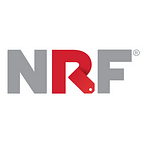Why online communities are key to customer engagement
Earning consumers’ confidence isn’t the end game, it’s just the beginning. Digital retailers are building on that trust by cultivating online communities of like-minded customers.
Less checking out, more checking in
The human desire for social connection is part of what gets people “hooked” on apps and other products. Author and entrepreneur Nir Eyal identified four basic components of every “hook,” the experiences that form habits. Social motivations and emotions — from loneliness to the fear of missing out — often prompt visits to apps like Facebook and Instagram. And social pressure and fears of not fitting in can prevent users from taking action.
What does this mean for retailers? There’s now “less of a focus on checking out and more of a focus on checking in. Shopping should be something that scratches the itch of boredom” and taps into our desire for entertainment, Eyal said. When retailers combine content and community, they can own that habit. Content and community are already combined outside of commerce sites — think Facebook, Pinterest and Instagram — and as a result, retailers are beholden to networks if they want to connect with consumers.
Engagement leads to loyalty
In retail, brand loyalty used to be tied to the convenience of a physical store location. Now consumers can shop at any store online, JustFab’s Adam Goldenberg said, so brands need a deeper relationship and engagement with customers to create loyalty. JustFab’s VIP membership model is the company’s way of spurring that engagement, and Goldenberg says the brand’s growth has been powered by member referrals and customer feedback.
“Social shopping” impacts the bottom line
ModCloth’s business model is also built around its “social shopping community,” Mike Janover said. An emphasis on community is integrated throughout the company’s digital presence, from product reviews to social media channels. The company has cultivated a strong connection with customers by listening to users and following their lead. In one case, customers’ use of a hashtag — #marriedinmodcloth — inspired a new line of wedding attire.
The company’s Style Gallery is a social feature that allows users to follow each other and browse user-submitted photos. Images are manually reviewed by ModCloth staff, who tag photos and attach product data
so the images can be featured on product detail pages. These features aren’t just fun to use; they make a big impact on the bottom line. Visitors who “love” photos in the Style Gallery are five times more likely to return to the site, ModCloth’s Kara Skrip said, and including Style Gallery images on product detail pages provides a significant conversion boost.
This story was originally published as part of Shop.org’s Digital Experience 2016 Playbook. Download playbooks and other free resources from the NRF Retail Library and make plans to attend Shop.org 2017 in Los Angeles this September.
